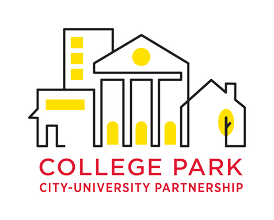Financial Underpinnings of Community Development

My career in affordable housing has made it clear that most things in this world come down to one of two things: time or money. In community development, it seems to me the variable that needs to be given more weight is money. Yes, the preceding sentence is a simplification. Yes, it just begins to scratch the surface of the central issue. Yes, it ignores the time aspect of analysis, in that community development needs to be timed strategically to maximize opportunity.
The Four Unwritten Rules of Finance
In this article, we take up the issue of money. We will outline a model for financial optimization to provide the reader with a framework for evaluating community development. There are principles of financial optimization evident, in my experience, on both the debt and equity sides. It is flavored by a recognition that a model is just that—an ideal, a theoretical design. Your own experiences will vary in the real world.
It is difficult to be the first investor.
A neighborhood, a patch of land, an underutilized transportation terminus, a surplus school, a failed mall—each of these represents potential when nurtured correctly. Investors—be they economic, social or psychic—are seeking opportunities to apply their ideas and commit their assets to further their goals. Often—not always—the first metaphorical stake in the ground might come from the public sector. It may deem change, or movement to another phase to be in the broader social good and is willing to invest capital, contribute a property, or commission a planning study to that end. It may be in tandem with a private sector organization that sees potential around the corner and is looking for public dollars to complement what they have in mind. What good is a newly renovated building if customers and tenants cannot get there? Early investment can shape the vision.
It is not so profitable to be the last investor.
The concept of “risk-adjusted returns” applies in community development. The investment that is first-in is taking the greatest risks, with a potential for loss significant, in spite of best efforts to minimize the risk. In the same vein, the last money in, when most of the heavy lifting (i.e., risk-taking) has occurred, naturally will get a lower return than the earlier investments.
The ‘lone wolf’ is not ideal for community development.
Typical market development, for example building in an established, stable community and building something that comports with that community, is not necessarily something that requires other sources of investment besides the private sector. While there may be benefits built in to enhance the likelihood of success, such as tax structures, and infrastructure improvements, these things may not make or break a deal. Community development projects, however, generally need more capital, planning and/or resources than a single private sector entity can provide. Having other sources in a risk position helps to diversify that risk AND heighten the likelihood of success.
Often non-traditional actors can be pivotal in pushing an idea into a reality.
Increasingly, we are seeing more creative and complex actors coming into the community development space. Projects previously limited to governmental agencies and quasi-public groups such as redevelopment authorities now may include any or all of the following: not-for-profits, philanthropies, corporate actors (think of Amazon and its efforts in housing), large employers, Universities and other thought leaders.
Moreover, non-traditional allocation of public money, such as low-downpayment loans, interest rate buy-downs, low or no cost loans for residential or commercial properties, downpayment assistance, incubator space funding (perhaps in part) by the public sector can introduce a more pronounced involvement of a broader array of stakeholders in decision-making.
Unwritten Rules of Community Development Finance
First In Takes the Risk
The first investor usually absorbs the greatest proportion of risk.
Snooze You Lose
When avoiding risk, late-game investors usually forego some potential return.
Avoid the Lone Wolf
It’s not ideal to wage a community development project solo.
Innovation Drives Reality
Creative actors can prove effective in today’s community development climate.
Community development is just that—community + development. In many ways, creative and purpose-built finance is the tool that is a necessary pillar of the overall concept. In College Park, we believe that all sectors—public, private, not-for-profit AND the community—working together provides the best vehicle for realizing goals and dreams for our community (people and businesses), and our future residents.
